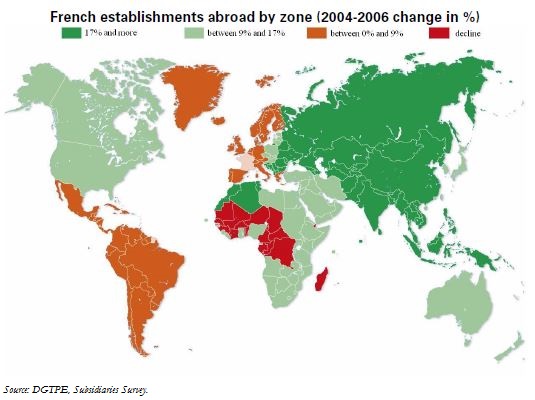Trésor-Economics No. 45 - French companies abroad
The presence of French companies in the world continues to grow. According to the "Subsidiaries Survey" conducted by the French Treasury (DGTPE), there were more than 30,000 French establishments around the world in 2006, up from 28,000 in 2004. They employed six million people and generated some €850 billion in turnover, i.e. more than twice as much as France earned from exports.
More than half of these companies operate in the service sector, and particularly in retail trade. As the report on the results of the 2004 survey highlighted, the size of this sector shows that French firms are willing to establish a presence abroad in order to get in touch with local demand. To a lesser extent, this is also true for the industrial sector, even if firms in this sector have more complex strategies.
Overall, there are more establishments in neighbouring countries, particularly in Western Europe, which accounts for nearly half of all French establishments abroad and the lion's share of their turnover. French firms are also very present in developed countries farther afield - mainly North America - where they have established presences to both serve local demand and to take advantage of the comparative advantages that these countries represent in terms of firms' production strategies.
Presence in emerging countries is more limited, particularly in terms of turnover, but this is growing rapidly (see map below). French firms view a presence in these areas above all as opportunities to penetrate high-growth markets and, to a lesser extent, as means for keeping down production costs, particularly manufacturing costs.
There is no contradiction between selling products through a local outlet and exporting them from France. Overall, complementarity links appear to be stronger than substitution links, and a strengthened global presence enables French companies to win markets with a variety of strategies.
